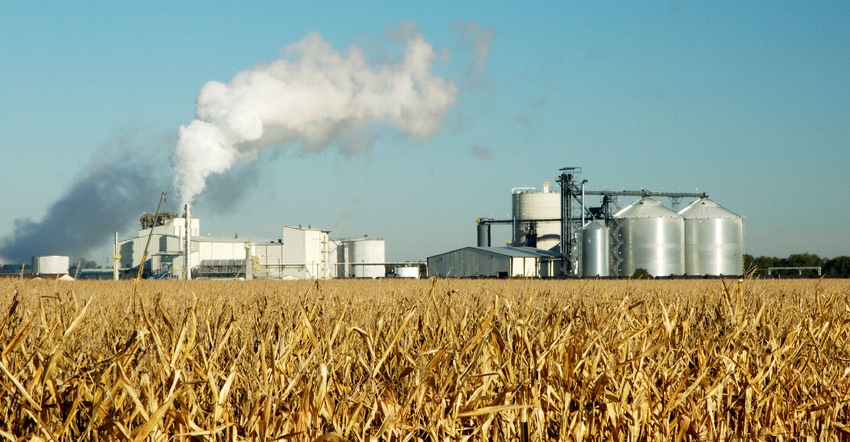New USDA study shows increased reduction in greenhouse gas emissions reductions by utilizing ethanol.

The U.S. Department of Agriculture (USDA) released an independent analysis that shows how ethanol continues to significantly reduce greenhouse gases (GHG) by up to 47% by 2022. The study notes that ethanol use in fuel transportation reduces GHGs by 43%, and projects that, based on current trends, the reductions will increase 4% in just three years.
The study, led by Dr. Jan Lewandrowski of USDA’s Office of the Chief Economist, and published in the journal Biofuels, supports findings of other research that ethanol has a significantly better greenhouse gas profile than previously estimated.
The study, titled “The greenhouse gas benefits of corn ethanol—assessing recent evidence,” attributes much of these additional benefits to revised estimates of the impacts of land-use change as a result of demand for ethanol. Where previous estimates anticipated farmers bringing additional land into production as a result of increased corn prices, recent analysis finds only modest increases in crop acreage. Additional improvements at ethanol refineries, combined with on-farm conservation practices that reduce greenhouse gas emissions, such as reduced tillage and cover crops, have further decreased emissions associated with corn ethanol.
In 2010, the U.S. Environmental Protection Agency (EPA) released a life-cycle analysis of the greenhouse gas (GHG) emissions associated with the production and combustion of corn ethanol. EPA projected that by 2022, the emissions profile of corn ethanol from a new refinery would be 21% lower than that of an energy equivalent quantity of gasoline. Since 2010, the 21% value has dominated policy discussions and federal regulations related to corn ethanol as a renewable fuel and a GHG mitigation option. It is now 2018 and new data, scientific studies, technical reports, and other information allow us to examine the emissions pathway corn-ethanol has actually followed since 2010.
Using this information, the study assesses corn ethanol's current GHG profile at 39–43% lower than gasoline. It also developed two projected emissions scenarios for corn ethanol in 2022. The study projects that with added improvements in refineries and on farms, a reduction of over 70% in lifecycle emissions is possible by 2022, or in a range of emissions that are 47-70% lower than gasoline.
Many countries (e.g. Colombia, Japan, Brazil, Canada and the European Union) are now developing or revising renewable energy policies. Typically, biofuel substitutes for gasoline are required to reduce GHG emissions by more than 21%. The study could help position U.S. corn ethanol to compete in these new and growing markets, the report noted.
“These new findings provide further evidence that biofuels from America's heartland reduce greenhouse gases even more than we thought, and that our farmers and ethanol plants continue to become more efficient and effective,” said Agriculture Secretary Sonny Perdue. “Expanding the sale of E15 year-round will provide consumers with more choices when they fill up at the pump, including environmentally friendly fuel with decreased emissions. I appreciate EPA Administrator Andrew Wheeler moving expeditiously to finalize the E-15 rule before the start of summer driving season.”
Growth Energy welcomed the report findings, and CEO Emily Skor issued the following statement: “This new USDA study further supports that ethanol is a win-win for all Americans,” said Skor. “Higher ethanol blends provide not only tremendous health and environmental benefits, but economic benefits as well for rural America and our farmers. Our industry remains committed to cleaner fuel options for all drivers, and ethanol’s role in reducing GHGs is among the reasons why. We look forward to drivers experiencing these benefits and more when they soon have access to E15 year-round.”
About the Author(s)
You May Also Like



.png?width=300&auto=webp&quality=80&disable=upscale)

